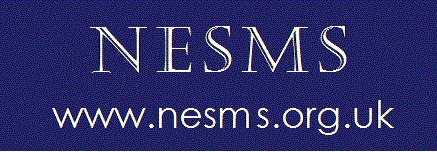click here

| To see other reviews of NESMS Concerts click here |
 |
| Musicians from The North East of Scotland Music School |
| Megan Rolf, James Halsey – Music for Two Cellos |
| St John's Episcopal Church, Aberdeen |
| Sunday, 30 March 2014 |
| Reviewed by Alan Cooper |
| As Dr Roger B. Williams said in his opening remarks as he introduced Sunday afternoon's special recital in St John's Church – the North East of Scotland Music School exists principally as a teaching institution – but live concerts must be the ultimate expression of everything that the School aims for. Performance, especially live performance, is the very life-blood of music. |
| Sunday's concert was particularly worthwhile for the School in that it brought together one of its most distinguished teachers, virtuoso cellist James Halsey in partnership with one of his most gifted pupils on the instrument, Megan Rolf. After the performance, Dr Williams mused that sometimes in such duet collaborations – the pupil takes an easy part leaving the teacher to indulge in flights of virtuoso fancy. On Sunday, nothing could have been farther from the truth. Here were two superbly matched artistes playing music for two cellos which demanded an equal level of accomplishment from both players – and this is exactly what we got. Take for instance the last movement of the final piece in the recital, the Sonata in G Major for Two Cellos by the French cellist and composer Jean-Baptiste Barrière. Passages where exuberant cascades of notes were written for both instruments, all these were played in synchronous perfection – a glorious performance. |
| The recital began with music by another rather more famous cellist/composer, the Italian, Luigi Boccherini. His Sonata in C Major for Two Cellos epitomised a salient feature of the recital namely that its scoring was brilliantly shared out between our two equally gifted performers. In the opening movement melody and accompaniments were passed from one instrument to the other so that both got equal opportunities to catch the limelight. In the lovely slow movement, parallel harmonies were beautifully matched with one another, the rich dark tones of lower passages contrasting with the lightness of upper sections. The finale was bright and crisp with joyous playing from the two happy partners in cello distinction. |
| The second piece in the recital was the first of several arrangements by a specialist in cello writing using another composer's famous melody from a quite different area of the repertoire – Tema con variazioni (Theme and variations) by Friedrich August Kummer on See the Conqu'ring Hero Comes, from Handel's Oratorio Judas Maccabeus. Regular churchgoing members of the audience would also have been familiar with that melody as the tune of the Hymn, Thine Be the Glory, risen conquering Son. The tune was passed from cello to cello and played with admirable richness and strength of tone. |
| "Exploratory Techniques" a Duo for Two Cellos Op.85 by Malcolm Arnold was in a 20th Century English idiom with pizzicato being the only technical adventure. The melodic writing was particularly attractive – a good example of Englishness in Music. |
| Chacone d'Armide was scored for cello by Gluck from his opera Armide and was the second of the attractive cello arrangements of music culled from a different source. |
| What followed was the piece that really seized my imagination. Local cellist Gwyn Seymour had scored a special arrangement for this concert of the second movement of the First Cello Concerto by Dmitri Shostakovich with Megan playing the solo part and James supplying the orchestral essentials on his cello. James said he was sure it would work rather well and I thought he was absolutely right. It went like a dream and Megan certainly gained her spurs with this splendidly insightful and thoroughly engaging performance. |
| Audience members will certainly have recognised the duet between Don Giovanni and Zerlina – Là ci darem la mano from Mozart's Opera in an arrangement for two cellos by Friedrich Dotzauer. The cellists made their instruments sing as expressively as any opera stars. |
| This brought us to the final item in the programme, that splendid Sonata in G Major for Two Cellos by Jean-Baptiste Barrière. It was certainly as good as Boccherini's Sonata – perhaps even better. Certainly that ebullient finale played not just with admirable vim and verve but with thrilling precision too won me over completely. |